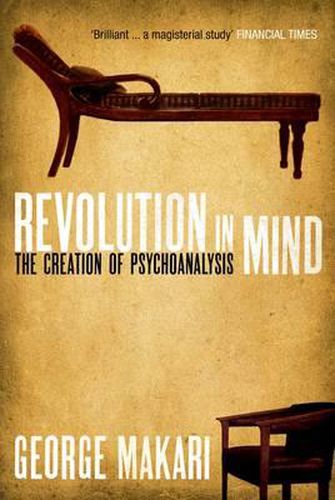Readings Newsletter
Become a Readings Member to make your shopping experience even easier.
Sign in or sign up for free!
You’re not far away from qualifying for FREE standard shipping within Australia
You’ve qualified for FREE standard shipping within Australia
The cart is loading…






Based on new archival materials and a decade of research, Revolution in Mind is a radically new history of psychoanalysis. It tells the story of the birth, development, and death of psychoanalysis in Europe between 1870 and 1945, integrating these chapters into a coherent narrative for the first time. How did Freudian Theory come together as a body of ideas, and how did these ideas attract followers who spread this model of mind throughout the West? Makari contextualises Freud’s early psychological work amid the great changes occurring in late-nineteenth-century European science, philosophy, and medicine, showing how Freud was a creative, inter-disciplinary synthesizer whose immersion in pre-existing domains of study led to the creation of Freudian Theory. He looks at how Freud’s followers built a heterogeneous movement in the years leading to 1914, at the growth of the movement, and its subsequent collapse with the departures of Bleuler, Jung and Adler. Finally, Makari examines the critical, but neglected, Weimar period, when there was an attempt to rebuild a more pluralistic psychoanalytic community. This reformation resulted in the broader theoretical reach of psychoanalysis and its greater acceptance across the Western world outside Europe, where the rise of fascism was to lead to the destruction of psychoanalysis and the culture that once sustained it.
$9.00 standard shipping within Australia
FREE standard shipping within Australia for orders over $100.00
Express & International shipping calculated at checkout
Based on new archival materials and a decade of research, Revolution in Mind is a radically new history of psychoanalysis. It tells the story of the birth, development, and death of psychoanalysis in Europe between 1870 and 1945, integrating these chapters into a coherent narrative for the first time. How did Freudian Theory come together as a body of ideas, and how did these ideas attract followers who spread this model of mind throughout the West? Makari contextualises Freud’s early psychological work amid the great changes occurring in late-nineteenth-century European science, philosophy, and medicine, showing how Freud was a creative, inter-disciplinary synthesizer whose immersion in pre-existing domains of study led to the creation of Freudian Theory. He looks at how Freud’s followers built a heterogeneous movement in the years leading to 1914, at the growth of the movement, and its subsequent collapse with the departures of Bleuler, Jung and Adler. Finally, Makari examines the critical, but neglected, Weimar period, when there was an attempt to rebuild a more pluralistic psychoanalytic community. This reformation resulted in the broader theoretical reach of psychoanalysis and its greater acceptance across the Western world outside Europe, where the rise of fascism was to lead to the destruction of psychoanalysis and the culture that once sustained it.